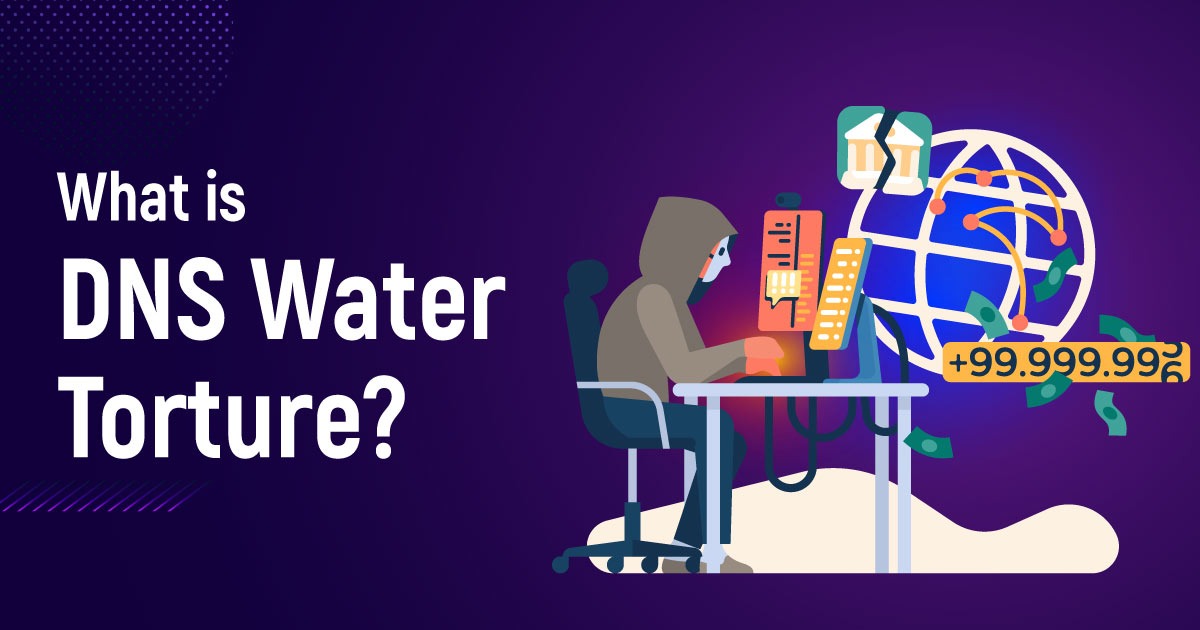DNS Water Torture is a type of DDoS attack that targets the Domain Name System (DNS), a critical component of the internet infrastructure. Instead of overwhelming the DNS server with a massive flood of requests, this attack employs a slow, steady, and persistent approach, resembling water droplets indirectly eroding a surface.
How Does DNS Water Torture Work?
The attacker leverages multiple compromised devices, forming a botnet network. These devices continuously send DNS requests to the target DNS server at a slow rate, exploiting the server’s limited processing capacity. The aim is to gradually consume the server’s resources, exhausting its ability to handle legitimate requests.
Impacts of DNS Water Torture
Server Overload and Unresponsiveness:
As the DNS Water Torture attack progresses, the targeted DNS server becomes overwhelmed by the sheer volume of incoming requests. This leads to increased response times and, eventually, unresponsiveness, rendering legitimate DNS queries unsuccessful.
Service Disruption and Downtime:
Due to the sustained and prolonged nature of this attack, organizations may experience significant service disruptions and even complete downtime. This can result in financial losses, damage to reputation, and a negative impact on user experience.
Collateral Damage:
DNS Water Torture attacks can have unintended consequences, affecting other services or systems that rely on the targeted DNS server. This collateral damage amplifies the overall impact of the attack, potentially leading to cascading failures across interconnected systems.
How to mitigate DNS Water Torture Attacks?
Network Traffic Monitoring:
Implement robust network traffic monitoring solutions that can detect abnormal patterns or spikes in DNS requests. By closely monitoring DNS traffic, organizations can identify signs of a DNS Water Torture attack in its early stages.
Rate Limiting and Filtering:
Deploy rate limiting mechanisms and traffic filtering rules at the DNS server or firewall level. This helps mitigate the impact of the attack by restricting the number of DNS requests allowed from a single source, thereby reducing the effectiveness of the attack.
Anomaly Detection and Behavior Analysis:
Employ advanced anomaly detection techniques and behavior analysis to identify unusual patterns or deviations in DNS traffic. These measures can help detect and block malicious traffic associated with DNS Water Torture attacks.
DDoS Protection Services:
Consider partnering with a reputable DDoS protection service provider. These services offer specialized mitigation techniques, such as traffic scrubbing and load balancing, to help organizations withstand and mitigate the impact of DNS Water Torture attacks.
How to strengthen the DNS Infrastructure?

Redundancy and Load Balancing:
Implement DNS server redundancy and load balancing techniques to distribute the incoming DNS traffic across multiple servers. This helps distribute the load and mitigates the impact of a DNS Water Torture attack on individual servers.
DNSSEC Implementation:
Deploy Domain Name System Security Extensions (DNSSEC) to ensure the integrity and authenticity of DNS responses. DNSSEC adds a layer of cryptographic security, making it more difficult for attackers to manipulate DNS records and exploit vulnerabilities.
Regular Patching and Updates:
Keep DNS server software and associated components up to date by applying security patches and updates promptly. Regular updates help address known vulnerabilities and strengthen the overall security of the DNS infrastructure.
Conclusion
DNS Water Torture poses a significant threat to organizations, leveraging a slow and persistent approach to exhaust DNS server resources and disrupt online services. By understanding the inner workings of this attack and implementing robust mitigation strategies, organizations can fortify their DNS infrastructure, detect and respond to attacks effectively, and ensure uninterrupted online operations. A multi-layered approach that combines network monitoring, traffic filtering, behavior analysis, and DNS infrastructure improvements is crucial in mitigating the impact of DNS Water Torture attacks.












